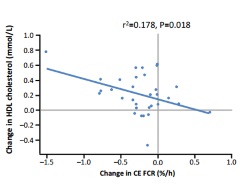Potential Mechanisms Leading to the Abnormal Lipid Profile in Patients With Rheumatoid Arthritis Versus Healthy Volunteers and Reversal by Tofacitinib
Charles-Schoeman C,
Fleischmann R,
Davignon J,
Schwartz H,
Turner S,
Beysen C,
Milad M,
Hellerstein M,
Luo Z,
Kaplan I,
Riese R,
Zuckerman A,
McInnes IB
Arthritis Rheumatol. 2015;67(3):616-25.
Active RA is associated with changes in both high- and low-density lipoprotein cholesterol as well as changes in the level and function of several HDL-associated proteins, yet the pathways and mechanisms involved with systemic inflammation altered lipid metabolism have not been determined. In addition, treatments for active RA are known to modify lipid metabolism, such as increasing circulating cholesterol levels. In the clinical development programme, a proportion of tofacitinib-treated patients exhibited increases in mean HDL-C, LDL-C, total cholesterol, apolipoprotein (Apo)A-I, and ApoB-100 levels, but the mechanism and significance of these changes are currently unknown.
This phase I, open-label mechanism of action study is the first study to assess cholesterol and lipoprotein kinetics in patients with active RA compared with matched healthy volunteers. The data suggests a novel mechanism that may explain suppression of circulating cholesterol levels in patients with active RA, in part through increases in CE catabolism.

